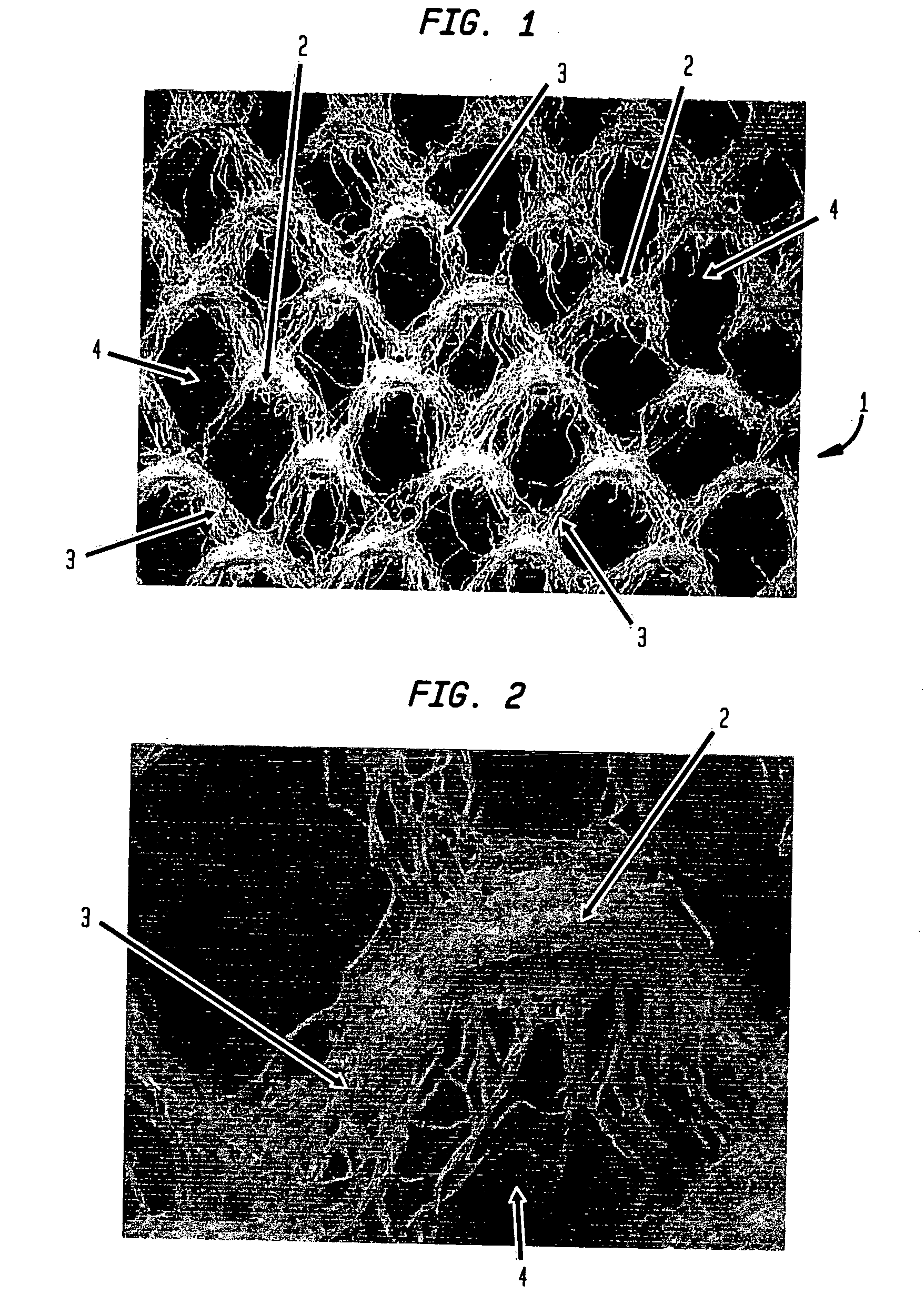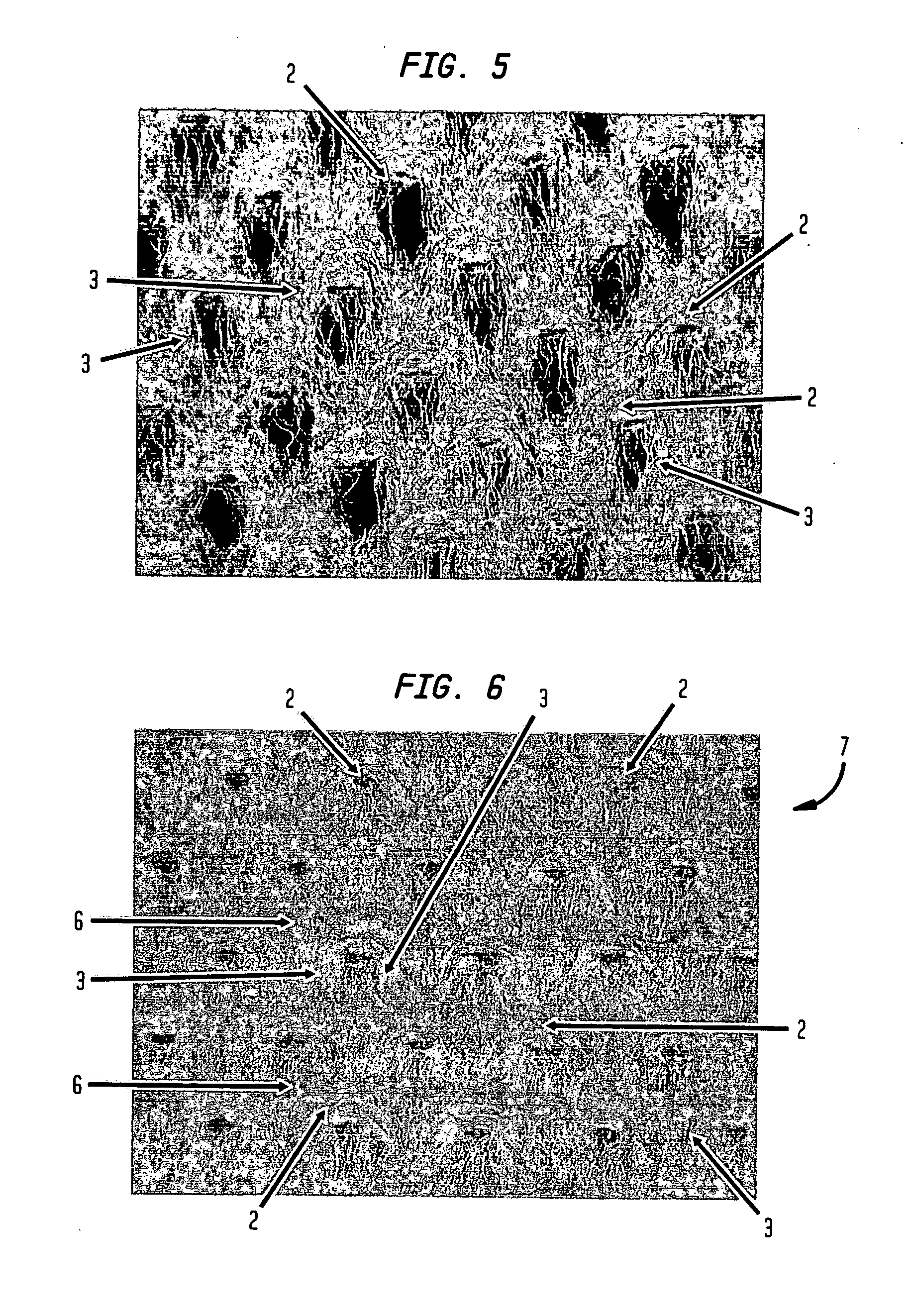Low compaction, pneumatic dewatering process for producing absorbent sheet
a technology of absorbent cells and low compaction, applied in the field of making absorbent cells, can solve the problems of affecting the operation of fabric creping processes, affecting the quality of paper, and difficulty in employing recycle fiber at the level which may be desired, and achieves large hydraulic diameters and high void volume fractions
- Summary
- Abstract
- Description
- Claims
- Application Information
AI Technical Summary
Benefits of technology
Problems solved by technology
Method used
Image
Examples
Embodiment Construction
[0035] The invention is described below with reference to several embodiments. Such discussion is for purposes of illustration only. Modifications to particular examples within the spirit and scope of the present invention, set forth in the appended claims, will be readily apparent to one of skill in the art.
[0036] Terminology used herein is given its ordinary meaning and the definitions set forth immediately below, unless the context indicates otherwise.
[0037] Absorbency of the inventive products is measured with a simple absorbency tester. The simple absorbency tester is a particularly useful apparatus for measuring the hydrophilicity and absorbency properties of a sample of tissue, napkins, or towel. In this test a sample of tissue, napkins, or towel 2.0 inches in diameter is mounted between a top flat plastic cover and a bottom grooved sample plate. The tissue, napkin, or towel sample disc is held in place by a ⅛ inch wide circumference flange area. The sample is not compresse...
PUM
| Property | Measurement | Unit |
|---|---|---|
| Fraction | aaaaa | aaaaa |
| Fraction | aaaaa | aaaaa |
| Fraction | aaaaa | aaaaa |
Abstract
Description
Claims
Application Information
 Login to View More
Login to View More - R&D
- Intellectual Property
- Life Sciences
- Materials
- Tech Scout
- Unparalleled Data Quality
- Higher Quality Content
- 60% Fewer Hallucinations
Browse by: Latest US Patents, China's latest patents, Technical Efficacy Thesaurus, Application Domain, Technology Topic, Popular Technical Reports.
© 2025 PatSnap. All rights reserved.Legal|Privacy policy|Modern Slavery Act Transparency Statement|Sitemap|About US| Contact US: help@patsnap.com



